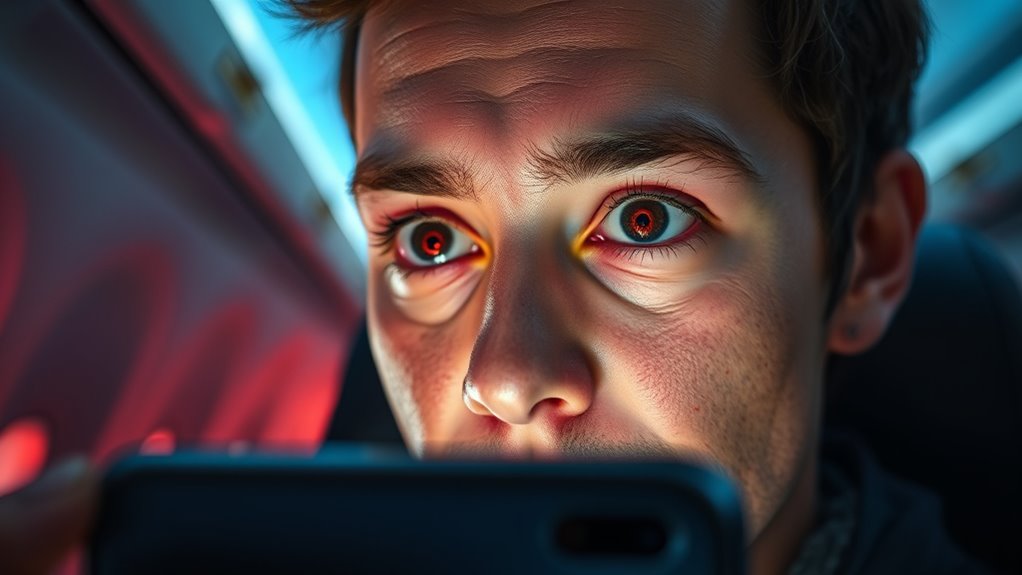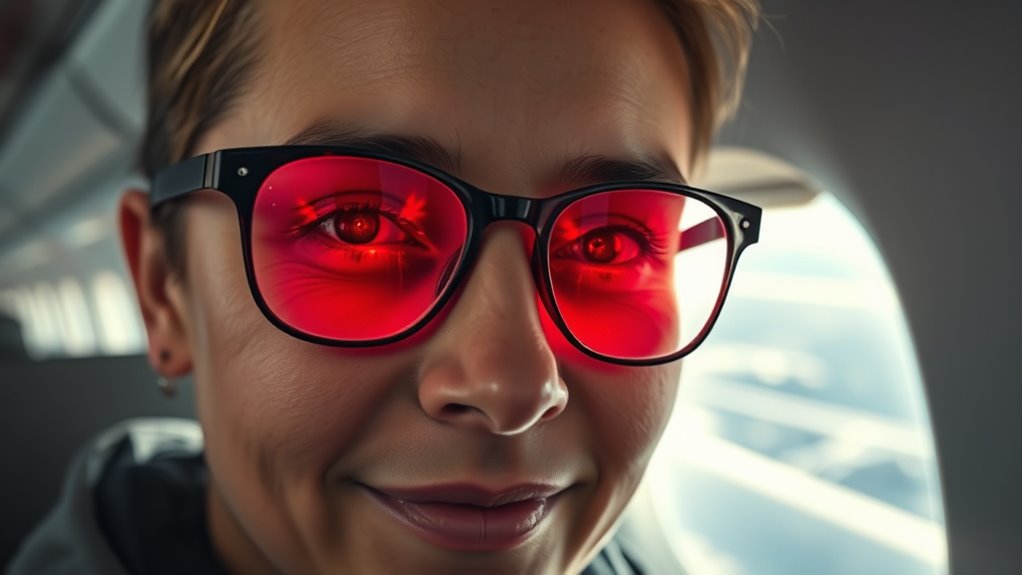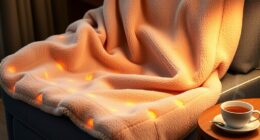Red-eye flights let you save time by flying overnight, helping you maximize travel or skip busy airports. They’re often cheaper and handy for quick trips or connecting flights. But you might face sleep deprivation, discomfort from cabin pressure, dehydration, and fatigue upon arrival. To make your trip smoother, you can use comfort accessories and stay hydrated. If you want to know how to handle these challenges and get the most out of red-eye flights, keep exploring.
Key Takeaways
- Red-eye flights maximize travel time by departing late and arriving early, saving daytime hours.
- They may cause sleep deprivation due to uncomfortable cabin conditions, leading to fatigue upon arrival.
- Cabin pressure and dry air can cause discomfort, headaches, and dehydration during overnight flights.
- Using comfort aids and staying hydrated can improve rest, but sleep quality remains limited on planes.
- Passengers should be aware of physical effects like ear pressure and dizziness to ensure safety and comfort.

Red-eye flights, those overnight journeys that depart late and arrive early, can be a convenient way to maximize your travel time. By flying overnight, you save on daytime hours and potentially avoid busy airports or high ticket prices. However, this convenience comes with its own set of challenges, especially when it comes to your body’s natural rhythms. Sleep deprivation is a common issue on red-eye flights, as sleeping on a plane isn’t always easy. The confined space, noise, and ambient lighting can make rest difficult, leaving you tired and groggy upon arrival. Additionally, cabin pressure plays a significant role in how well you sleep and how your body reacts during the flight. Airplane cabins are pressurized to simulate altitudes of about 6,000 to 8,000 feet, which can cause discomfort and dehydration, further complicating your ability to rest. This reduced oxygen level can lead to headaches, fatigue, and a feeling of exhaustion that lingers long after you land.
You need to plan ahead if you want to combat these issues. Bringing a neck pillow, eye mask, and noise-canceling headphones can help create a more comfortable environment for sleeping. Staying hydrated is essential, as cabin pressure tends to dry out your nasal passages and skin, worsening fatigue. Avoid caffeine and alcohol before and during the flight because they can interfere with your ability to rest and worsen dehydration. When it’s time to sleep, try to mimic a nighttime routine: close the window shades, wear comfortable clothes, and use a sleep mask to block out light. Keep in mind that the cabin’s environment isn’t ideal for deep, restorative sleep, so don’t expect to wake up feeling fully refreshed. Instead, plan some downtime upon arrival to adjust to the new time zone and recover from the effects of sleep deprivation.
Recognizing how cabin pressure impacts your body can help you better prepare for the flight, making the experience less stressful. The reduced oxygen levels can lead to feelings of dizziness or lightheadedness, especially if you have pre-existing health conditions. Moving around the cabin periodically can improve circulation and reduce discomfort. If you’re prone to sinus issues or ear pain, yawning, swallowing, or using earplugs can help equalize ear pressure. Being aware of these factors helps you adapt and take necessary precautions. While red-eye flights can be a practical way to maximize travel time, be aware of how sleep deprivation and cabin pressure can affect your comfort and health. Planning ahead and understanding your body’s responses will make sure you arrive ready to start your day, even if your sleep was less than ideal.
Frequently Asked Questions
Are Red-Eye Flights Suitable for Elderly Travelers?
Red-eye flights might not suit elderly travelers well, as they can impact elderly comfort and mobility assistance needs. You may find it harder to rest and stay comfortable during overnight trips. If you or your loved ones require mobility assistance, traveling overnight could complicate access to help or amenities. Consider other flight options that provide better comfort and support, ensuring a smoother journey and less fatigue.
How Do Red-Eye Flights Impact Mental Alertness Upon Arrival?
Think of your mind as a delicate clock; red-eye flights can throw it out of sync. Sleep deprivation from traveling overnight impacts your mental alertness upon arrival, leading to cognitive impairment. You might feel foggy or sluggish, making it harder to focus or make decisions. To minimize this, try to rest during the flight and stay hydrated, helping your brain reset quicker and maintain sharper alertness once you land.
What Are the Best Strategies to Sleep on Red-Eye Flights?
To sleep well on red-eye flights, bring along sleeping aids like earplugs and an eye mask to block out noise and light. Adjust the cabin lighting by using your eye mask to create a dark environment, signaling your body it’s time to rest. Stay hydrated and avoid caffeine. Recline your seat if possible, and practice relaxation techniques to help you fall asleep faster and enjoy restful sleep during your flight.
Do Red-Eye Flights Have Higher Chances of Delays or Cancellations?
Red-eye flights tend to have similar or slightly higher chances of delays or cancellations compared to daytime flights. You face factors like airport congestion, airline reliability, and weather, which can impact flight punctuality. Airlines often operate fewer flights overnight, but this can also mean fewer resources for quick turnaround. To minimize risks, check recent delay statistics and choose reputable airlines, ensuring your journey stays smooth despite the late hour.
How Do Airlines Accommodate Passengers With Medical Conditions on Red-Eye Flights?
Airlines usually accommodate passengers with medical conditions on red-eye flights by offering priority boarding and extra assistance. You can request special meal options in advance, ensuring your dietary needs are met, and some airlines provide in-flight entertainment tailored for relaxation or distraction. Make sure to inform the airline beforehand, so they can prepare the necessary support, helping you travel comfortably despite the late hours.
Conclusion
So, next time you book a red-eye, remember—you’re sacrificing precious sleep for a quick trip. The irony? You’ll arrive exhausted, wishing you’d stayed home. Sure, you save money and time, but at what cost? That early morning meeting or sightseeing adventure might feel like a nightmare in disguise. Sometimes, the best choice is to avoid the red-eye altogether—unless, of course, you enjoy the thrill of fighting exhaustion. Sweet dreams, or not.










